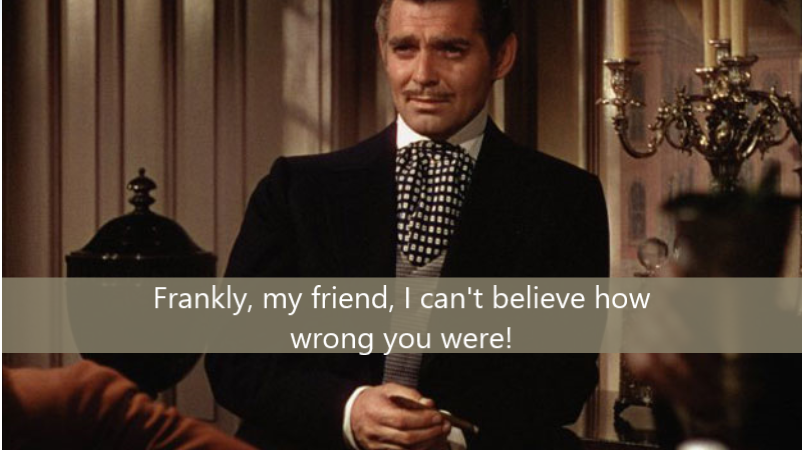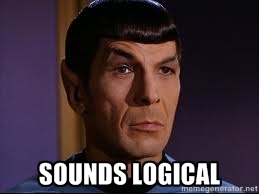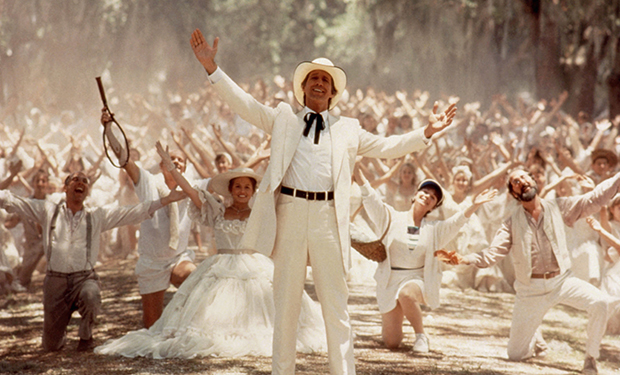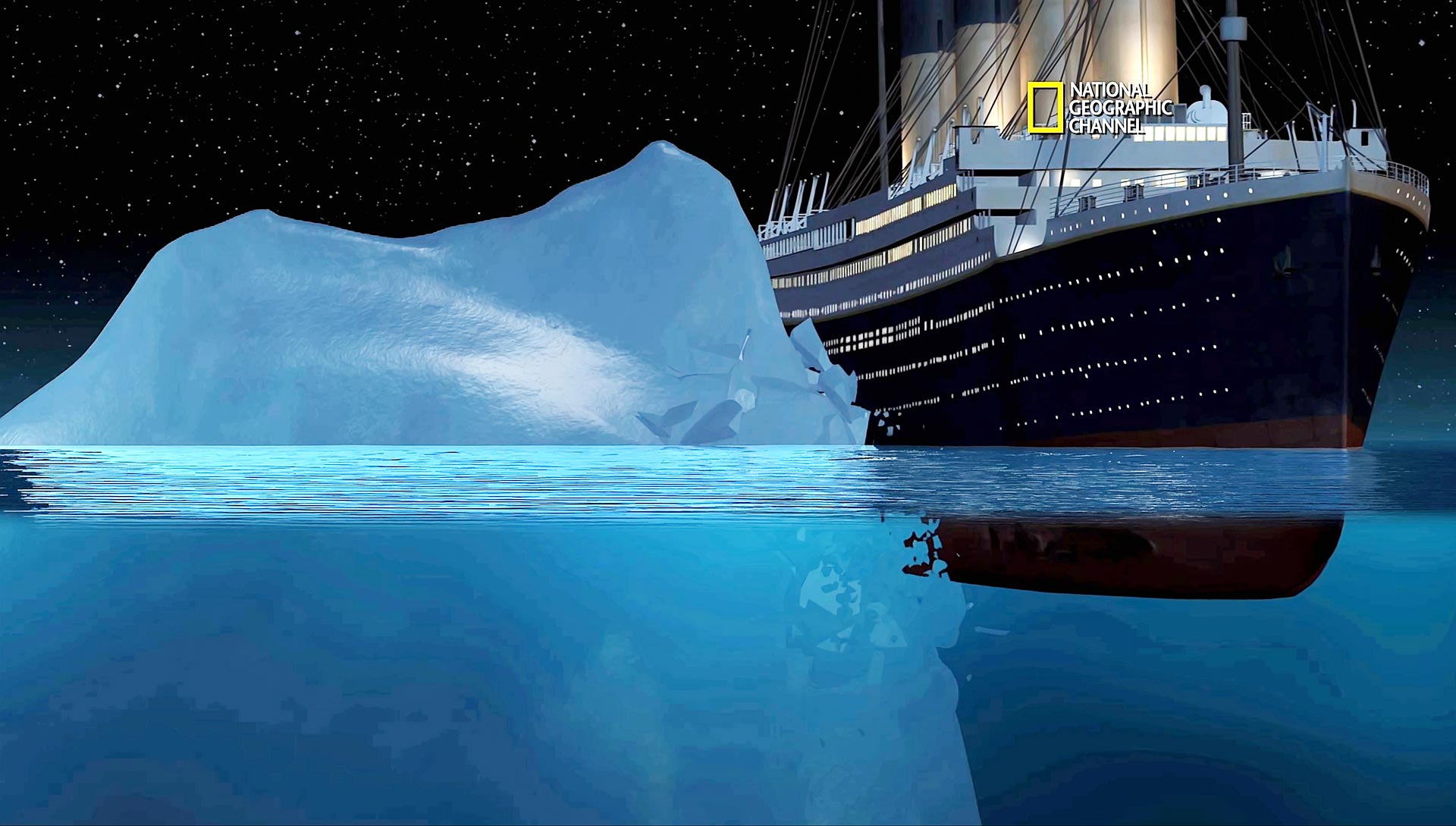 I started ranking movies on the internet in February 2011. My first movie subjects were all current actors and actresses and finding box office information was very easy….thank you Box Office Mojo. As I grew an audience for my pages, I started getting requests for older actors. My mother-in-law requested a Clark Gable page. At first I quickly dismissed this request….as I thought nobody would be interested in reading about somebody that passed away over 50 years ago. That was mistake number one! Turns out lots of people are interested in actors and actresses of yesteryear. When I look at my Top 50 most popular pages….26 (or 52%) of them are classic performers!
I started ranking movies on the internet in February 2011. My first movie subjects were all current actors and actresses and finding box office information was very easy….thank you Box Office Mojo. As I grew an audience for my pages, I started getting requests for older actors. My mother-in-law requested a Clark Gable page. At first I quickly dismissed this request….as I thought nobody would be interested in reading about somebody that passed away over 50 years ago. That was mistake number one! Turns out lots of people are interested in actors and actresses of yesteryear. When I look at my Top 50 most popular pages….26 (or 52%) of them are classic performers!
So when I started researching Mr. Gable’s movie career I quickly discovered box office rentals. Box office rentals are what a movie studio gets back from theaters not the movie’s box office grosses. So since I think I am a pretty smart guy (mistake number two), I gathered up some of my old Variety magazines that listed box office rentals. I created a Excel spreadsheet (mistake number three…the wife says always use Access) that listed the box office rentals from Variety and the actual box office grosses from Box Office Mojo. Overall I found over 1,000 movies that had both rentals and grosses. I did some math and found that on average….box office rentals were 44.18% of box office grosses…or a multiplier of 2.2. The easy formula I came up with was: Box office rentals (times) 2.2 = actual box office gross. The next thing I realized was that with the exception of Gable’s Gone With The Wind, he did not have a movie with a domestic box office gross of over $11 million. So to solve that problem I found out average movie ticket prices from 1912 to 2011. Using ticket prices I was able to give each of Gable’s movies an adjusted box office gross. Calculating adjusted box office grosses turned out to be a great way to compare how an old movie would have performed today (I got that part right!).
So feeling pretty good about my logic…I went to work. Since 2011 I ranked almost 26,000 movies and have written over 300 movie pages on current and classic actors and actresses. My movie pages have been quoted in newspapers, won some awards (3 time Hubbie winner…thank you thank you) and have opened some memorable communication lines with some of the movie subjects I have written about and their families. My pages have been read all over the world with over 5 million views. Basically I have been running around singing Disney songs.
Recently I was researching the careers of Carole Lombard and Claudette Colbert. I almost feel like a treasure hunter…only instead of gold or money…I am searching for box office numbers from the 1930s and 1940s. My searches have taken me to some pretty cool places. During my Lombard and Colbert search…I ended up in Australia of all places….as I found Australia’s Jonathan Derek Silver’s 600 page thesis on the movie business. One of his tables of information showed film rentals as percentage of box office grosses with sources from Film Daily Yearbook and others. On my second viewing of the table I realized that the percentage CHANGED every year…..and that they were not even close to the percentage I used in ALL of my calculations of box office grosses.
So after hitting the iceberg, I sent Thomas Andrews (he built the Titanic) down to assess the damage. The good news is that almost 20,000 of the movies (movies from 1982 to 2016) in our database were shaken and scared but actually in pretty good shape. The bad news? All 5,619 classic adjusted box office grosses are WRONG! When I was getting my multiplier I only used movies from 1980 to 1988 (that was my critical mistake) as the following table shows….the film rentals as percentage of box office grosses was constantly changing….and I picked the time frame that had the highest percentage…which ultimately severely short changed all of the classic movie’s adjusted box office.
The Following Table Shows Just How Wrong I Was
- Column 1 is the amount of tickets a movie sold in that year
- Column 2 is the wrong film rentals as percentage of box office grosses that I used
- Column 3 is the amount of movies in my database for that year
- Column 4 is the old number of movies with an adjusted $100 million or higher gross
- Column 5 is the old number of movies with an adjusted $200 million or higher gross
- Column 6 is the old average adjusted box office gross of all movies for that year
- Column 7 is the new film rentals as percentage of box office grosses that I will use
- Column 8 is the new number of movies with an adjusted $100 million or higher gross
- Column 9 is the new number of movies with an adjusted $200 million or higher gross
- Column 10 is the new average adjusted box office gross of all movies for that year
| Year | Tickets Sold | Old Rental % | Movies | Old $100 mil. Movies | Old AVG Gross | New Rental % | New $100 mil. Movies | New AVG Gross | |
|---|---|---|---|---|---|---|---|---|---|
| 1928 | 3.38 billion | 44.18% | 29 | 4 | $53.13 | 30.00% | 5 | $80.65 | |
| 1929 | 4.94 billion | 44.18% | 28 | 5 | $60.00 | 31.30% | 8 | $86.96 | |
| 1930 | 4.68 billion | 44.18% | 28 | 3 | $84.93 | 32.50% | 17 | $118.74 | |
| 1931 | 3.90 billion | 44.18% | 56 | 7 | $69.12 | 33.80% | 21 | $92.55 | |
| 1932 | 3.12 billion | 44.18% | 77 | 12 | $55.31 | 35.00% | 15 | $71.11 | |
| 1933 | 3.12 billion | 44.18% | 87 | 10 | $59.62 | 35.00% | 12 | $76.76 | |
| 1934 | 3.64 billion | 44.18% | 83 | 7 | $60.95 | 35.00% | 15 | $77.46 | |
| 1935 | 3.90 billion | 44.18% | 96 | 10 | $64.98 | 35.00% | 27 | $83.43 | |
| 1936 | 4.57 billion | 44.18% | 96 | 22 | $81.54 | 35.00% | 50 | $122.57 | |
| 1937 | 4.42 billion | 44.18% | 108 | 13 | $67.83 | 25.00% | 56 | $117.37 | |
| 1938 | 4.42 billion | 44.18% | 98 | 16 | $58.44 | 25.00% | 46 | $105.30 | |
| 1939 | 4.42 billion | 44.18% | 120 | 17 | $61.66 | 25.00% | 49 | $104.34 | |
| 1940 | 4.16 billion | 44.18% | 106 | 27 | $77.10 | 35.00% | 39 | $103.55 | |
| 1941 | 4.42 billion | 44.18% | 100 | 31 | $84.00 | 31.00% | 56 | $118.16 | |
| 1942 | 4.42 billion | 44.18% | 163 | 58 | $87.94 | 35.00% | 79 | $113.46 | |
| 1943 | 4.42 billion | 44.18% | 87 | 48 | $115.68 | 35.00% | 61 | $149.97 | |
| 1944 | 4.42 billion | 44.18% | 83 | 40 | $103.21 | 31.00% | 51 | $147.32 | |
| 1945 | 4.68 billion | 44.18% | 75 | 39 | $116.52 | 35.00% | 44 | $149.50 | |
| 1946 | 4.68 billion | 44.18% | 106 | 67 | $141.10 | 35.00% | 74 | $181.15 | |
| 1947 | 4.68 billion | 44.18% | 95 | 46 | $106.11 | 35.00% | 55 | $137.35 | |
| 1948 | 4.68 billion | 44.18% | 96 | 42 | $92.28 | 35.00% | 58 | $119.84 | |
| 1949 | 4.55 billion | 44.18% | 101 | 23 | $72.28 | 36.00% | 41 | $91.02 | |
| 1950 | 3.12 billion | 44.18% | 113 | 18 | $72.73 | 22.50% | 36 | $94.15 | |
| 1951 | 2.80 billion | 44.18% | 108 | 15 | $59.62 | 35.00% | 30 | $77.44 | |
| 1952 | 2.65 billion | 44.18% | 117 | 18 | $58.75 | 36.00% | 30 | $74.05 | |
| 1953 | 2.39 billion | 44.18% | 125 | 17 | $59.97 | 33.00% | 33 | $79.08 | |
| 1954 | 2.54 billion | 44.18% | 95 | 45 | $105.42 | 35.00% | 51 | $136.67 | |
| 1955 | 2.39 billion | 44.18% | 110 | 34 | $90.39 | 35.00% | 45 | $115.71 | |
| 1956 | 2.44 billion | 44.18% | 106 | 24 | $97.73 | 31.00% | 33 | $125.57 | |
| 1957 | 2.34 billion | 44.18% | 108 | 18 | $61.75 | 29.00% | 39 | $94.06 | |
| 1958 | 2.08 billion | 44.18% | 95 | 13 | $59.91 | 27.00% | 36 | $98.82 | |
| 1959 | 2.18 billion | 44.18% | 89 | 22 | $83.08 | 25.00% | 41 | $146.07 | |
| 1960 | 2.08 billion | 44.18% | 82 | 18 | $72.51 | 23.00% | 41 | $137.36 | |
| 1961 | 2.18 billion | 44.18% | 79 | 17 | $76.84 | 24.00% | 33 | $142.46 | |
| 1962 | 2.23 billion | 44.18% | 89 | 13 | $60.49 | 22.00% | 33 | $121.56 | |
| 1963 | 2.28 billion | 44.18% | 87 | 22 | $75.12 | 26.00% | 34 | $119.94 | |
| 1964 | 2.25 billion | 44.18% | 85 | 10 | $63.68 | 25.00% | 28 | $100.82 | |
| 1965 | 2.28 billion | 44.18% | 99 | 15 | $80.69 | 32.00% | 16 | $92.04 | |
| 1966 | 1.97 billion | 44.18% | 87 | 22 | $62.82 | 32.00% | 23 | $69.71 | |
| 1967 | 0.92 billion | 44.18% | 80 | 13 | $75.18 | 32.00% | 15 | $83.46 | |
| 1968 | 0.97 billion | 44.18% | 101 | 13 | $50.91 | 32.00% | 20 | $64.65 | |
| 1969 | 0.91 billion | 44.18% | 93 | 11 | $46.73 | 32.00% | 17 | $65.25 | |
| 1970 | 0.92 billion | 44.18% | 100 | 13 | $51.32 | 27.00% | 20 | $74.89 | |
| 1971 | 0.82 billion | 44.18% | 84 | 6 | $34.70 | 25.00% | 13 | $53.86 | |
| 1972 | 0.93 billion | 44.18% | 84 | 8 | $49.07 | 27.00% | 15 | $74.59 | |
| 1973 | 0.86 billion | 44.18% | 82 | 12 | $66.85 | 26.00% | 16 | $99.42 | |
| 1974 | 1.00 billion | 44.18% | 70 | 17 | $71.05 | 29.00% | 23 | $95.07 | |
| 1975 | 1.03 blllion | 44.18% | 86 | 13 | $66.19 | 30.00% | 24 | $82.98 | |
| 1976 | 0.95 billion | 44.18% | 84 | 16 | $55.98 | 28.00% | 19 | $71.36 | |
| 1977 | 1.12 billion | 44.18% | 85 | 24 | $76.96 | 32.00% | 26 | $83.44 | |
| 2011 | 1.28 billion | 602 | 33 | ||||||
| 2012 | 1.36 billion | 667 | 31 | ||||||
| 2013 | 1.34 billion | 688 | 36 | ||||||
| 2014 | 1.27 billion | 702 | 32 | ||||||
| 2015 1.30 billion | 693 | 29 |





HI BRUCE:
1 Film historians have claimed that on average a domestic gross is 2.18 times the rental which is virtually the figure you were using but which you concluded was inaccurate.
2 My interpretation of your new % rental to gross is that if say the rental was $2.5 million for a 1953 movie the ACTUAL gross would be obtained by dividing $2.5 million by the 33% mentioned for that year in your table and multiplying by 100% which would give an actual gross of $7.58 which you then adjust for Ticket Inflation or CPI as the case may be. But is my interpretation correct?
Hey Bob….pretty sure you are calculating it correctly. I got WoC to show me some of the behind the scenes stuff in the database….and she is not using a multiplier like I thought …..she is using the % like you are in the comment. The change now has me “clueless” about it….but to me the numbers look like they should be. Once you get the gross….that is when you divide the average ticket price. I am not sure how close or far apart the CPI and the average ticket cost would be….seems they should be close…..glad you had a great weekend.
1 Thanks for the confirmation. For stars of the Classic Era the use of the Ticket Inflation Method benefits their totals far more than using the CPI method but today there is little difference. For example:
1955 The McConnell Story
Cogerson/ $10 million actual gross – $162.1 adjusted gross
CPI/$10 million actual gross – $87.3 adjusted gross
Difference $74.8 million
2003 Mystic River
Cogerson $90.14 million actual gross – $126 million adjusted gross
CPI $90.14 million actual gross -$118.27 adjusted gross
Difference $7.73 million
2014 American Sniper
Cogerson/$350.13 million actual gross – $361.3 million adjusted gross
CPI/$350.13 million actual gross – $357.07 million adjusted gross
Difference $4.23 million
2 In the comparisons of the respective grosses of the big stars modern ones like Harrison Ford, Tom Cruise, Willis and Tom Hanks benefit enormously from the CPI method as their hits were after the classic era. The grosses of stars such as Cagney and King Gable are savaged by the CPI method as their box office success was almost entirely before the 1960s. Chuck, Bud and Newman also lose out under CPI but not as much as other classic era stars because each of those three had big hits beyond the classic era. The Duke and Liz Taylor are also not quite as badly hit by CPI as the likes of Cooper and Bogie because Wayne and Elizabeth had hits beyond the 1950s In short the gap between CPI and Ticket inflation methods began to narrow considerably after the 1950s.
3 However I would know little of the foregoing if it were not for the raw material that you provide so my debt to you extends well beyond the Ticket Inflation figures that you give us.
Hey Bob…..thanks for sharing these stats. You are right the closer we get to 2016 the closer the gap is shortened. Interesting differences when looking at the movies from the 1950s…gotta say I like my number way more than the CPI number for The McConnell Story. Strange how Cooper and Wayne have such different results…especially since they made movies in many over lapping years. Thanks for the info…greatly appreciated.
1 Hi Bruce. Cooper’s box office career was from the 1930 until 1961 so he takes the full brunt of CPI’s reduced figures for classic era stars. Wayne and Liz Taylor on the other hand do suffer under CPI but not to the extent of Cooper as Liz and Duke had massive hits in the 1960s and in the Duke’s case into the 70s when the gap between CPI and Ticket Inflation calculations had narrowed considerably and indeed there was nothing between the two methods by 1966.
2 I like you prefer Ticket Inflation but there is no ‘right’ or ‘wrong’ method as your selection will depend on your objective – CPI measures contemporary purchasing power of actual money whereas the Ticket Inflation method shows us what a movie from yesteryear would make if the same number of people saw it today. Mojo uses Ticket Inflation whereas Wikipedia always quotes CPI adjustments for movie grosses.
CAINE/BURTON
3 When considering Burton’s contradictory statements about Sir Maurice it must be remembered that Dickie drank heavily and that gave him savage mood swings. It is quite possible that he loathed Sir M when drunk but when sober realised Maurice’s
undoubtedly great qualities. On the other hand maybe the opinion of Sir M changed because he held Burton’s coat in that alleged fist fight with Brando ! Anyway that Burton kept bringing up Sir M’s name and that we are still talking about Micklewhite 60 years after he started acting demonstrates that Michael well and truly “made it” among the Big Boys – no small feat for a British actor with a Cockney accent who was competing in and industry dominated by Yanks.
Hey Bob.
1. Thanks for the breakdown on Wayne vs Cooper. Interesting stuff as usual.
2. As you say there is no “right” or “wrong”….we are all like origin scientists….using the things we have to try and figure out what happened years ago.
3. I imagine much of Burton’s diary is written when he was heavily influenced by alcohol.
4. No arguments here about the success of Caine. He is a great story teller…..I wonder if a tell all book will come? His take on the Burton/Taylor fight would be one awesome read.
Thanks for the return comment…..it is appreciated.
Hello, can you tell me which is correct. I’ve reviewed the box office percentage of
each year on the 600 pages thesis and it listed as follows:
1950 = 35% UMR 1950= 22.50%
1965 = 37% UMR = 32%
1966 = 40% UMR = 32%
1967 = 40% UMR = 32%
1968 = 35% UMR = 32%
1969 = 35% UMR = 32%
If there is any reason why you modify the percentage differently, could you explain?
Thanks
Hey Kevin….not sure why they are different…my old two guesses are …..we downloaded them incorrectly or he has changed them since we last looked at his thesis….I will have to take a closer look to figure out what went wrong. My first thought would be his numbers are correct and mine are wrong…..basically because they are his numbers.
It looks like the big issue was from 1965 to 1969….with of course 1950…..sorry I do not have a better answer right now…..but I will do some deeper research….I have a 4 day weekend coming soon…so I should get an answer this weekend.
BRUCE/JOHN
I meant to place the previous post on the Gary Cooper page and realised too late that where I had inserted it was meaningless. Perhaps Bruce would transfer it to Coop’s page when he has a moment. Apologies for inconvenience.
BOB
Hey Bob….your comment has been moved to the Gary Cooper page.
BRUCE
1 Many thanks and sorry for putting you to that trouble.
2 I think you said that someday we might have a facility for editing after we make a post. Obviously it would relate only to our own material though I would love the opportunity to edit some of Steve and Flora’s work !
BOB
Hey Bob….1. No problem. 2. WoC has been so backed up at work that she has not had the chance to look at the comment possibilities….which would include an edit button….though not thinking you will be able to fix Steve and Flora’s comments….lol.
Sorry I meant $ 2,500,000 for 10 million tickets, Not $25,000,000
Hey Kevin…understood….hope my first comment helped
Okay, correct me if I’m wrong. If I want to find which movies in 1928 that sold a minimum of 10,000,000 tickets, and we only can get box office rentals instead of gross for that year all i have to do is take avg ticket price (.25 cents X 10m = $25,000,000) / by 3.0 which is 30% which comes to 833,333 in B.O rentals for that year?
Hey Kevin
1. If you have tickets sold….then all you have to do is multiply the tickets sold by average ticket prices that year…..when you do that….rentals are not needed at all….so in your example the gross in 1928 would be $25.00 million….and the 30% would not be included anywhere in the calculation.
2. Sadly ticket sales are not known….though I wish they were…..so that means you have to get rentals to gross.
3. The lower the percentage in column 7 (30% for 1929)…means the greater the multiplier of the box office rental numbers. When I first did a universal 2.2 multiplier (44%)….a movie with a rental number of $1,000.000 would have had a 1929 gross of $2,200,000 (1,000,000 * 2.2 = 2,200,000). But since the studio only got back 30% in 1929….the multiplier would be 3.2….so in this example….the gross would have been $3,200,000 (1,000,000 * 3.2 = $3,200,000).
4. Even though it is only a million…..when you consider how cheap tickets were….you see how much more the gross went up.
5. So in a nutshell….the lower the % in column 7….the higher the multiplier.
6. Maybe this weekend….I will see if my wife (WoC) will get the database to spit out the multipliers for each year….which will make the chart easier to read….plus I see the first part of the table is covered up due to the links on the right covering it up….need to fix that for sure.
Hope that helps…..the more I have used the new calculations…..the more I am convinced it was the way to go….even if it meant re-doing almost 400 movie pages.